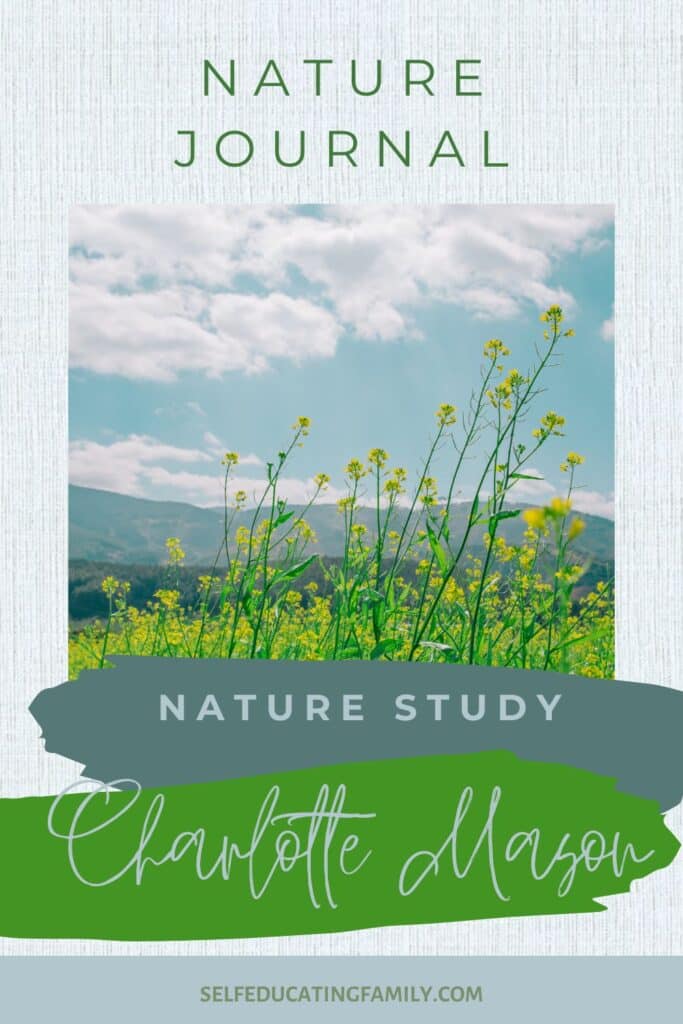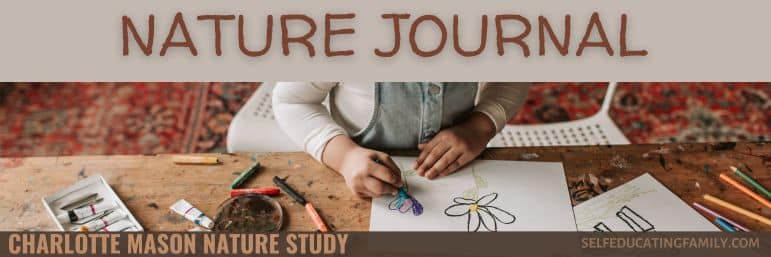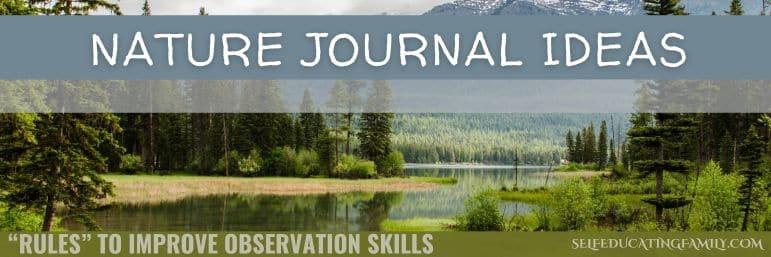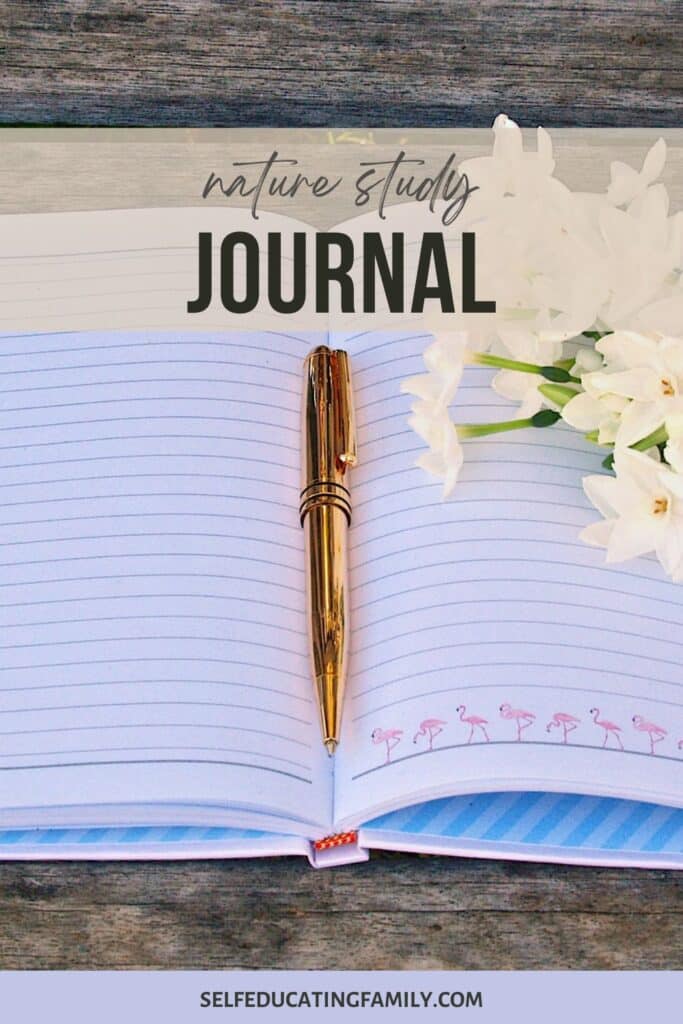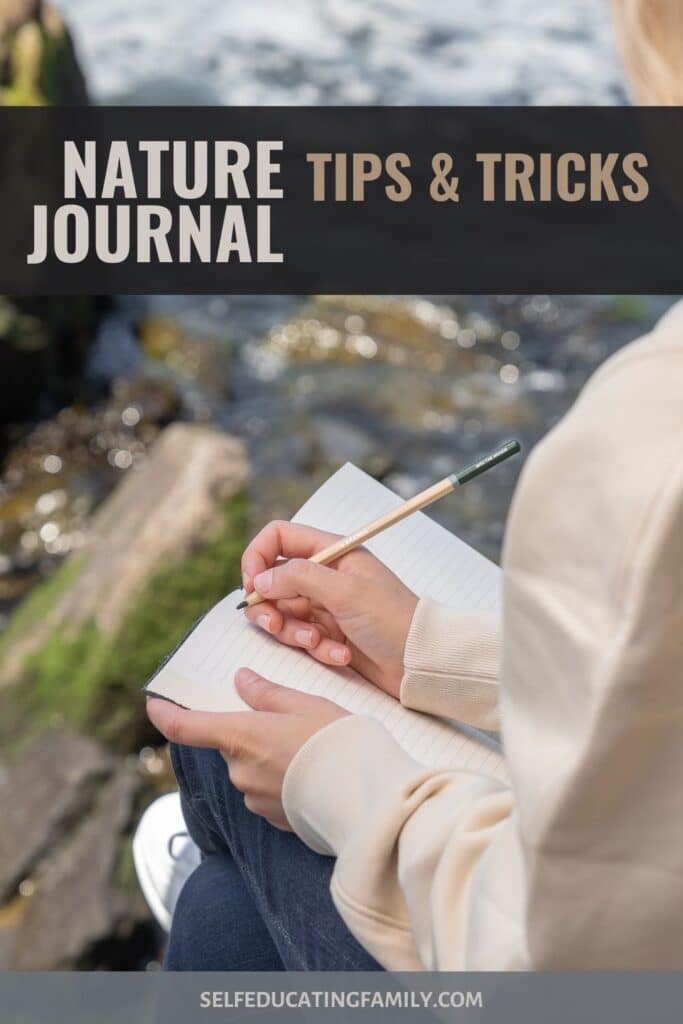How to Start a Nature Journal for Kids
What’s inside: Tips & tricks to start a nature journal with kids, including prompts to get your kids observing nature. If you struggle with ideas to help your kids make connections with the natural world, this post will give you actionable strategies to start a nature journal with kids, including a sample journal page to download for your nature study.
Can Nature study make your kid brilliant?
I hope so!
Putting nature in the way of your child has so many benefits!
Never be within doors when you can rightly be without.
Charlotte Mason
Read more of what Charlotte Mason said about nature study or get some inspirational quotes from literature. In the last post on nature walks, we divided nature study into 2 parts: the doing and the documenting. This post focuses on “documenting” using a nature journal. And depending on your dog, you may or may not be able to take him with you when you are using your nature journals.
Disclosure: This post contains affiliate links, meaning that if you make a purchase after clicking through, SelfEducatingFamily will receive a small commission at no extra cost to you.
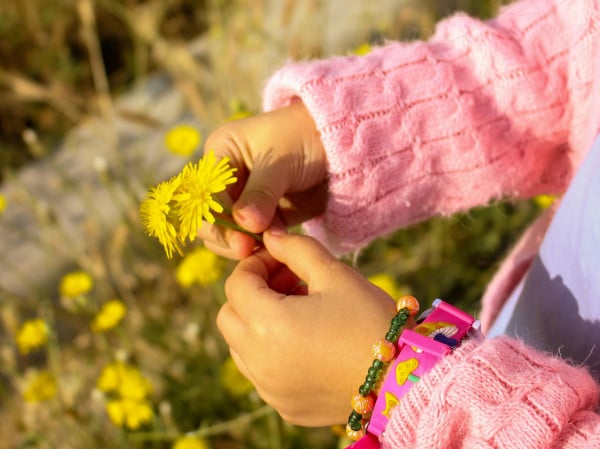
What is a nature journal?
A nature journal is a place to record your personal observations when you are out in nature. Naturalists call them field notebooks.
If nature study helps you with the science of observing the natural world, then your journal is how you record your observations. It combines notes, pictures, sketches, lists, maps, diagrams, and even samples (for instance, a pressed flower).
Your journal helps you connect with nature – like a response – you observe nature and then write or sketch in your journal.
It’s YOUR observations.
No right or wrong way to do this! But you can get lots of tips and pointers to enhance your observations.
What kind of journal do I need?
Whatever you like! I prefer blank books or sketchpads, but dive in with something inexpensive to get a feel for it. You can also use a 3-ring binder with printables. Or you can make a blank book yourself.
Making a Nature Journal DIY
Once, I attended a Charlotte Mason conference and one of the workshops was on nature study. The presenter had made blank nature journals for all of us. They were simple, but beautiful. The inner pages were on very good quality paper – it had such a sumptuous feel! Only 3 or 4 pieces of paper folded in half and put into a cover, also folded in half. The cover was even heavier-weight paper and of a creamy mocha. The pages were “sewn” together with yarn at the fold.
We used the journal during that conference.
The point is, a DIY nature journal can be a simple paper handicraft you may want to try sometime. You can practice with lesser weight paper before you try the really nice paper.
Here’s a nice tutorial that can step you through making a nature journal by Nell at Rhythms of Play.
Examples that I use
If you are not up for making your own journal, you can purchase one at your local craft store. I usually wait until Black Friday to get the deals! Look in the sketchbook section. I like the Strathmore drawing or sketching pads because the paper has a nice weight, and I also like the wire binding which lets you lay the notebook flat.
How do I start?
Clare Walker Leslie in her book Keeping a Nature Journal recommends starting by putting down some basic information like name, date, place, and weather conditions. Then, start sketching your observations and if you are at a loss for where to start, use the trick of “Draw three things” – something from the ground, something at eye level, and then something far off.
I find these recommendations very helpful because a blank page staring back at you can be overwhelming.
Use words and sketches
With a nature journal, you are not limited to just drawing what you see. By using words to describe your observations, you can add a rich dimension to your journal.
Journal Prompts
Here are some questions you can ask yourself:
- What do I hear?
- What season is it? See ideas for Autumn here!
- How does the weather affect what I am observing?
- How many different sounds can I hear?
- What kind of details can I see?
- How many colors are around me? What shades?
These kinds of questions make great journal prompts.
Getting more in Depth
When you select an object to record in nature, you can begin your own in-depth study of the object.
- Can you identify the object?
- If you can, what’s its botanical name? What’s its common name?
- If you can’t, write down questions to research later.
- Where did you find it?
- What do you know about it already? Can you diagram it?
- What are your impressions about your object?
- Describe your object with words when your sketch can’t capture what you observe.
Again, these questions will prompt you to write answers (or more questions) in your journal.
Nature Study Lists
Did you know you can make a whole page in your journal that is just a list?
Yes, some people like to keep master lists of things like “Birds Spotted” or “Trees”. They’ll list the common name, the Latin name, and when & where they saw it. There’s a free sample printable of a “Weed List” available in our free library when you sign up for the newsletter.
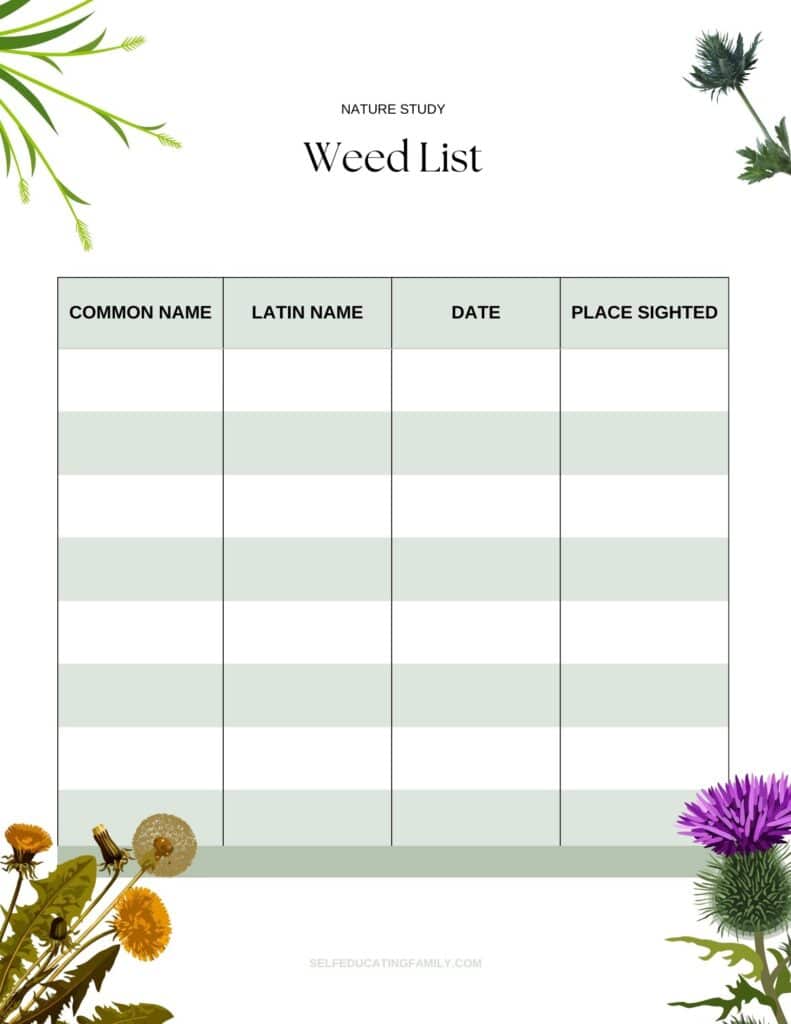
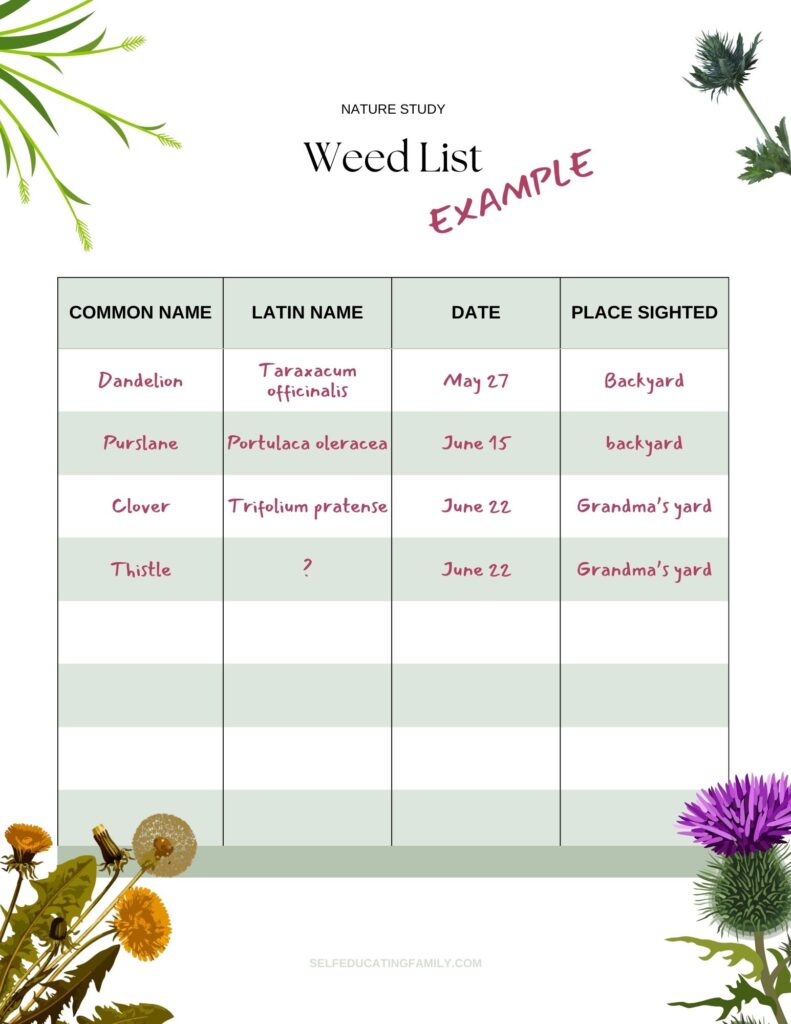
FAQ
A homemade nature journal can be a simple as a binder that you add your own pages to. OR you can try a bookbinding craft to make your own.
When you go out into nature and record your observations in a notebook, you are making a nature journal. Your subjects are from the living natural world.
Answering questions in your nature journal can be a fun way to get started with your observations. Use your senses: What do you see, hear, or feel? And what are the colors and textures? What is the weather, climate and season? How do the people you are with interact with nature?
Keep Learning
If you would like more detail on working with a nature journal, then try my One-Week Challenge: Get Outdoors with Nature Study.
Get the One-Week Video Nature Study Challenge!
In just 5 days, you can jump start your nature studies & using a nature journal with easy habits and routines from this course. Special launch pricing now!
Related Posts
Starting a Nature Journal
- How to Start a Nature Journal Today | Lily & Thistle
- Essentials of Nature Journaling | Childhood by Nature
- How to Start a Nature Journal with Kids | Thimble & Twig
